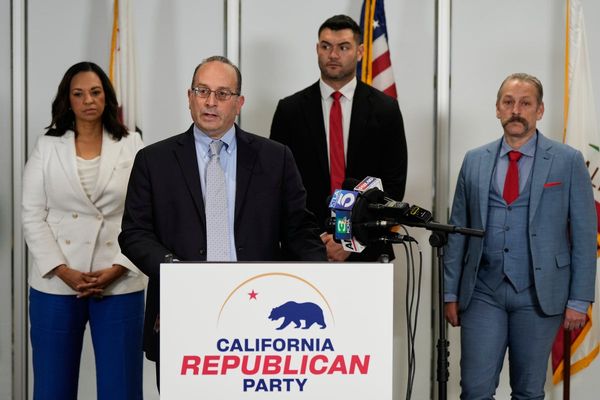
In the final part of her series on Te Tiriti and Democracy for Newsroom, Dame Anne Salmond examines the Māori and settler views of land and 'property' and asks if Aotearoa NZ might have had better outcomes if those early Pākehā had tried to understand tangata whenua's values.
Read her earlier articles here:
► Part 1: Judges led by misunderstanding of Māori belief systems
► Part 2: Judicial rewriting of history worsened Treaty problems
► Part 3: Arguing for a tikanga-based approach to Te Tiriti
► Part 4: Te Tiriti dictum of unite and rule
► Part 5: The principle of equal representation
In 1838 Rev. Samuel Hinds, an advocate for the New Zealand Company, wrote in support of its ambitions to colonise the country:
“Civilized man is the guardian of the savage. God and nature appoint that it should be so; and if civilized man deprives the savage of his real or supposed inheritance, by disposing of it to those who will cultivate it and settle in it, this not only raises the value of the land disposed of, but of the land which remains.
It [also] teaches them to make their property more and more valuable, and to assume a sovereignty over their portion of the earth, in some other sense than that in which the lion and tiger are sovereigns of their jungles, and the buffalo of his pasture grounds.”
By this time in Britain, the idea of ‘private property’ as the foundation of ‘civilised’ societies was built into legal as well as everyday framings.
As William Blackstone, for instance, wrote in his famous Commentaries on the Laws of England (1765-1770), in a state of ‘savagery,’ there was no private property. “All was common among them, and everyone took from the public stock to his own use such things as his immediate necessities required.”
As populations increased, animals were domesticated, houses were built and fields were cultivated, the idea of private property emerged – “that sole and despotic dominion which one man claims and exercises of the external things of the world, in total exclusion of the right of any other individual in the universe.”
In Aotearoa New Zealand, the colonial process of privatising ‘the commons’ began with whenua, or land. The land was surveyed, divided into blocks with lists of owners, and converted into a commodity for sale on the market.
Once whenua had been redefined as ‘property,’ it was assumed that ‘owners’ had exclusive rights to occupy and use it; and this was backed by legal framings, through the laws of trespass, for example.
This was radically different from ancestral Māori conceptions of whenua, in which people belong to the land, not the other way around. Whenua (afterbirth) refers to the tikanga of burying the placenta in the land, binding land and person together – the origin of the term ‘tangata whenua.’
Papa-tuānuku, the earth, is the ancestor of people as well as of the ocean, winds, wild and cultivated foods and the forests. Rivers and lakes are the tears of Ranginui, the sky, when he and Papa were forced apart by their children.
Because Tū, the ancestor of people, stood tall in the battle that followed this separation, his offspring have the right to harvest the fruits of his brothers. In ancestral times these use rights were backed by occupation, keeping one’s fires alight on the land.
Through whakapapa, different hapū or kin groups had use rights to harvest different birding trees, eeling pools, gardens, fernroot grounds or fishing grounds in the same area at different times of the year. These networks of use rights and whakapapa intertwined.
Before Te Tiriti was signed in 1840, the seeds of the transformation of land into a commodity were sown with the activities of land sharks, surveyors and prospective colonists including the New Zealand Company, with Rev. Hinds as an enthusiastic advocate.
In Te Tiriti itself, a little discussed provision also introduced the idea of land as ‘property’ to be bought and sold on the market.
In Ture 2, in return for the Queen’s agreement to the ‘tino rangatiratanga’ of the Rangatira, the hapū and all the inhabitants of New Zealand, the Rangatira gave the Queen the right to hoko (barter, buy and sell) “those parts of the land where the person attached to the land is willing” (‘ka tuku ki te Kuini te hokonga o era wahi wenua e pai ai te tangata nona te wenua.)
Even then, the use of the possessive pronoun ‘nōna’ places the relationship with land in the same category as relationships with family members.
Later, the Native Land Court, with its use of surveyors, maps of ‘blocks’ and lists of owners cut across whakapapa networks, transforming land into ‘private property.’ As Renata Kawepo remarked to the Superintendent of Hawkes Bay in 1863, “Sir, our land is a rangatira, but now it is being enslaved, inasmuch as it is being sold for money. In the old days it was not sold.”
As has been argued before the Waitangi Tribunal, it took a long time for Māori to see land as a commodity, rather than as their chiefly ancestor and earth mother, Papa-tuānuku. Some iwi have never assented to this proposition.
The Urewera Act (2014), for instance, says of Tūhoe’s ancestral land, “Te Urewera expresses and gives meaning to Tūhoe culture, language, customs, and identity. There Tūhoe hold mana by ahikāroa; they are tangata whenua and kaitiaki of Te Urewera.” The Urewera is defined as a legal person, a territory that ‘owns itself.’
Likewise in the Whanganui River Treaty claim, Whanganui elders famously argued that they and the river are inextricably entangled: “Ko au te awa, ko te awa ko au. Kei te mate te awa, kei te mate ahau” (I am the river, and the river is me. If I am the river, and the river is me, then emphatically, I am dying). In Te Awa Tupua (Whanganui River) Act (2017), the river is defined as a legal person with its own rights and life.
Despite this recognition of the mana of the river, however, the Tribunal still upheld the idea of private property. As it noted in its 2012 report on the national freshwater and geothermal resources claim, “We agree with the Whanganui River Tribunal, which found in respect of that river: It does not matter that Māori did not think in terms of ownership in the same way as Europeans. What they possessed is equated with ownership for the purposes of English or New Zealand law.”
In other words, if Maori claimants wish to uphold ancestral relations with land or waterways, they must acquiesce in having these redefined as property interests ‘for the purposes of the law.’
As lawyer Alex Frame observes:
“The commodification of the ‘common heritage’ has provoked novel claims [to the Waitangi Tribunal] and awakened dormant ones… Claims to water flows, electricity dams, airwaves, forests, flora and fauna, fish quota, geothermal resources, seabed, foreshore, minerals, have followed the tendency to treat these resources, previously viewed as common property, as commodities for sale to private purchasers. Not surprisingly, the Māori reaction has been: if it is property, then it is our property!”
The idea of ‘property’ also underpins the requirement that kin groups establish “Post-settlement Governance Entities” to receive Treaty settlements, and the imposition of Western commercial framings. Even the definition of the Urewera and Whanganui River as ‘legal persons’ still rests on the idea of ‘possessive individualism,’ with land and the river alike understood as ‘owning itself.’
In Ture 2 of Te Tiriti, when the Queen agrees with the Rangatira, the hapū and all the inhabitants of New Zealand to ‘te tino rangatiratanga’ of their lands, dwelling places and all of their taonga, this raises a fundamental question. Is this relationship to be understood according to tikanga, in which the land itself is a rangatira, more ancient and powerful than people?
Under ‘tino rangatiratanga,’ the answer is surely yes. Under Ture 3 of Te Tiriti, too, the Queen gives to all the indigenous inhabitants of New Zealand ‘nga tikanga rite tahi’ – exactly equal tikanga – with those of her subjects, the people of England.
This suggests that a balance must be struck in the law between Western and indigenous ideas about relations between people and land, waterways and forests – for instance in the new legislation that replaces the Resource Management Act.
This balance has been attempted in the Urewera and Whanganui Acts. In almost every other arena of national life, however, the urge to convert taonga into ‘resources’ for exploitation appears unabated.
The impetus towards commodification is obvious in current debates over Three Waters, fisheries, carbon farming with pine trees and many other aspects of human relationships with waterways, land and the ocean in Aotearoa New Zealand, sometimes vigorously supported by iwi agencies.
This is despite the fact that according to global scientific reports, it is exactly this extractive philosophy that is driving the existential crises that put the future of humanity at risk – climate change, loss of habitat and the extinction crisis, global pandemics, the degradation of waterways and the ocean.
To return to Rev. Samuel Hinds’s proposition that if only Māori could be taught to “assume a sovereignty over their portion of the earth” and their taonga as ‘property,’ they would become ‘civilised’ - was this a prophecy, or a malignant idea based on colonial hubris?
That is likely to remain a question of ardent debate. As Simon Winchester has recently suggested in his book Land, which traces the idea of land as a commodity, we might all be better off if the incoming settlers had been less whakahīhī (arrogant), and learned to listen to tangata whenua, and the voice of the land.
As the saying goes, ‘Whatungarongaro te tangata, toitū te whenua ’ – ‘While people vanish from sight, the land always stands.’







